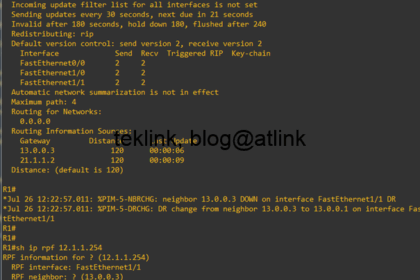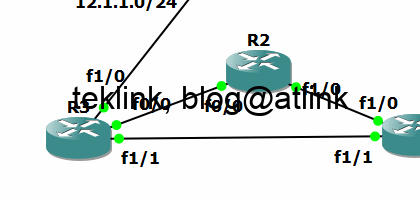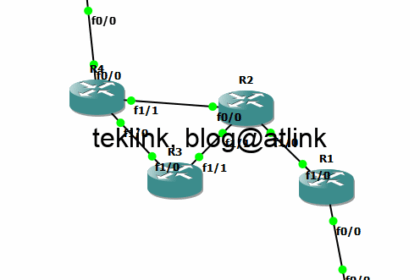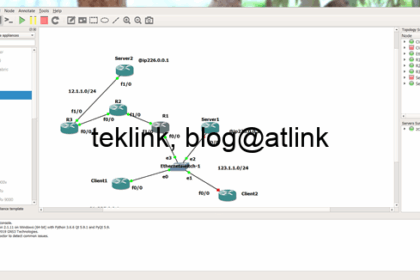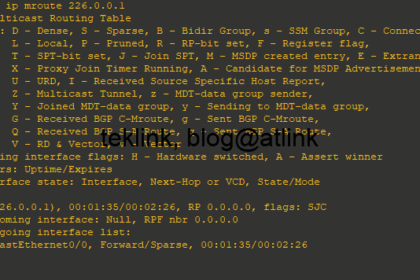In this post, we work on our understading of the operation of RIP and how split horizon rule work Lab setup In our setup, R1 and R2 routers are in RIP domain and exchange information about loopback 0 ...
In this blog let’s study from the source multicast routing Introduction This blog is a part of a serie of articles about multicast routing: Previously, we’ve introduced multicast routing a...
In this post we explore the operation of static routing, epecially the use of the metric feature, in a network that already runs an IGP (RIP routing protocol). Network setup In our 3 routers RIP netwo...
In this blog let’s study PIM dense multicast routing. Introduction This post is a part of a serie of posts that introduce the operation of multicast routing: We explore in this post, the operati...
This post is a part of series of posts about RIP dynamic routing protocol. Here we deepen our understanding on how RIP protocol advertises learnt RIP routes. A simple case is where a route is in the m...
RIP is Routing Information Protocol, one of the IGP or Interior Gateway Porotocols called also a vector-based routing protocol in contrast with link-state, hybrid or path-based protocols. The function...
Ansible (1) Aruba (1) Blockchain (2) Checkpoint (3) Cisco (32) Connectivity (38) Creativity (13) Cybersecurity (1) Extreme Networks (1) Fortinet (1) GNS3 (11) Linux (1) MachineLearning (1) Microsoft (4) Productivity (5) Python (1) RFC (1) Scapy (1) VirtualBox (1) Wireshark (7)
- Protected: An Example Network From Scratch… Internet AccessThis content is password protected.
- Protected: An Example Network from Scratch… Build the Wifi NetworkThis content is password protected.
- Protected: An Example Network From Scratch… On-Premise Network Automation With AnsibleThis content is password protected.
- Protected: An Example Network From Scratch… Build your Network SecurityThis content is password protected.
- Travailler Son CVLe CV est une étape importante de toute recherche d’emploi, au moins pour initier le processus (répondre à une offre, candidature spontanée, etc.)… plus encore, c’est une occasion de se poser, de réfléchir son développement, son expérience et de se projeter dans une nouvelle opportunité! Une approche classique du CV Pour nombre de “demandeurs d’emploi”,
| M | T | W | T | F | S | S |
|---|---|---|---|---|---|---|
| 1 | 2 | 3 | 4 | |||
| 5 | 6 | 7 | 8 | 9 | 10 | 11 |
| 12 | 13 | 14 | 15 | 16 | 17 | 18 |
| 19 | 20 | 21 | 22 | 23 | 24 | 25 |
| 26 | 27 | 28 | 29 | 30 | 31 | |

